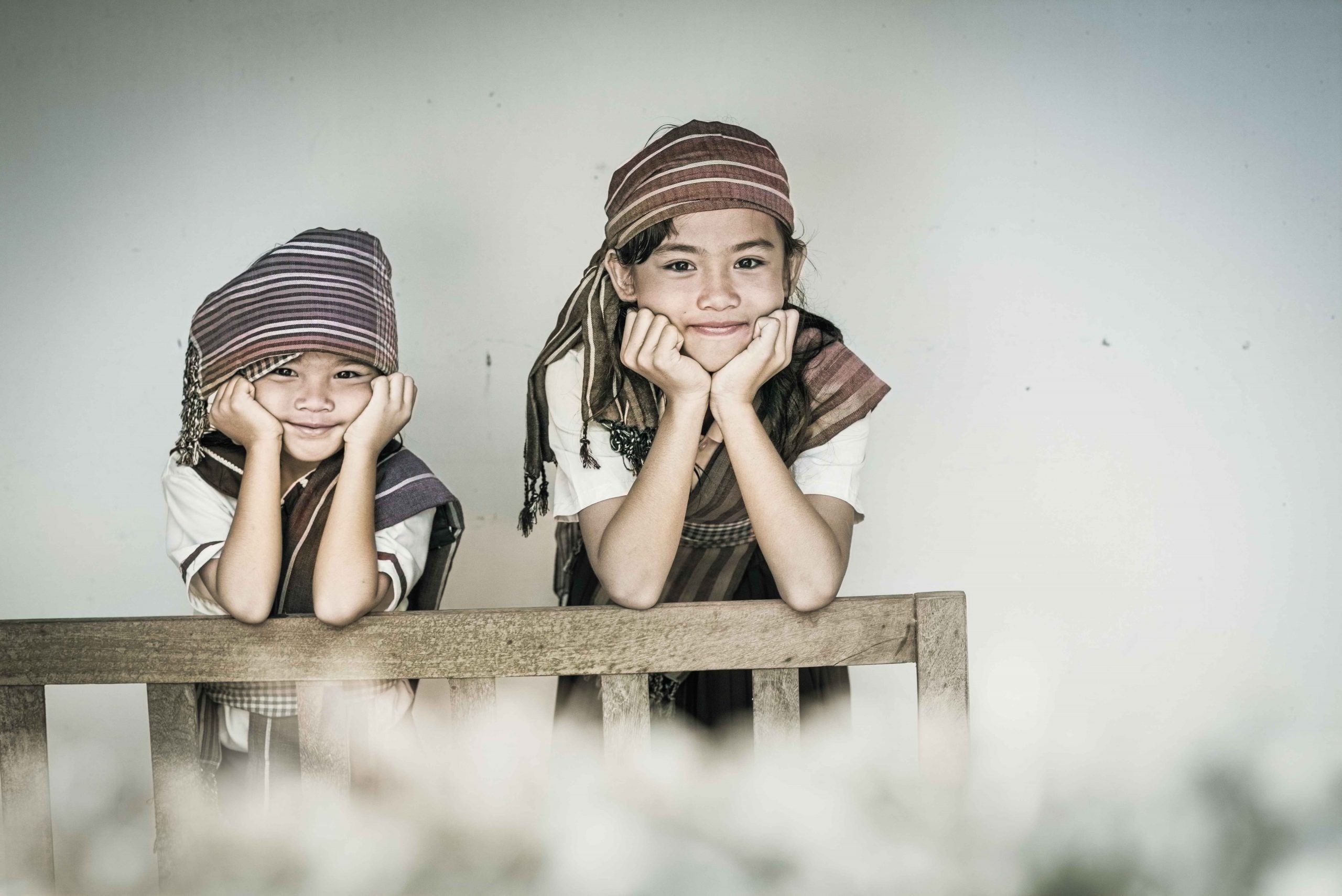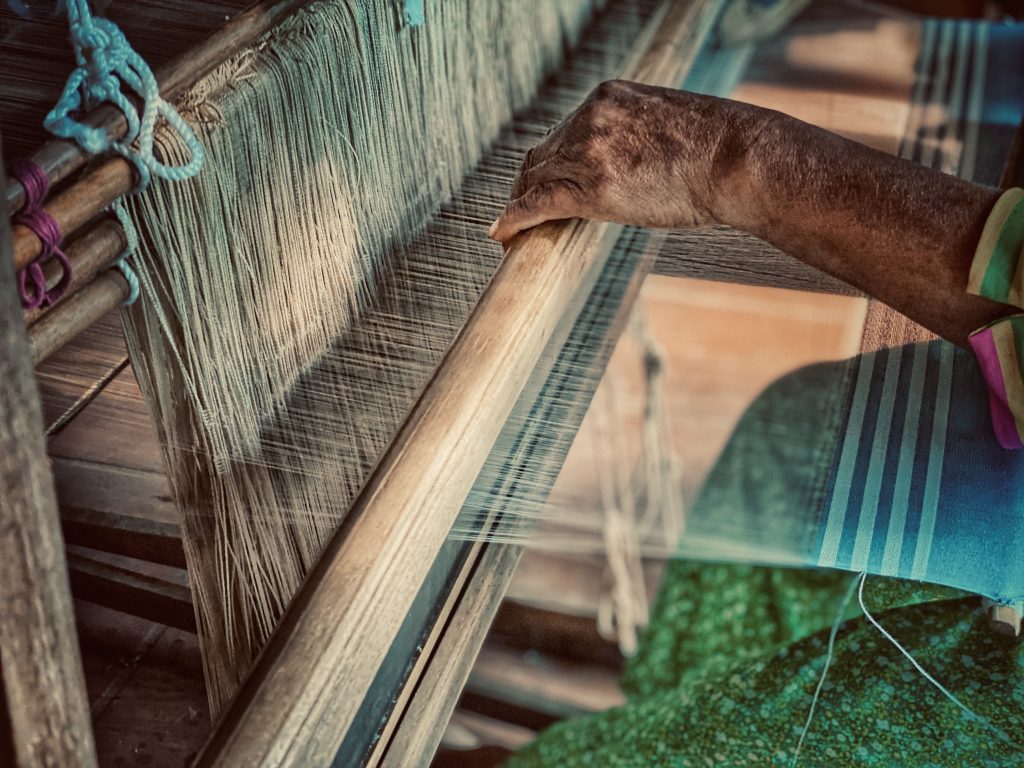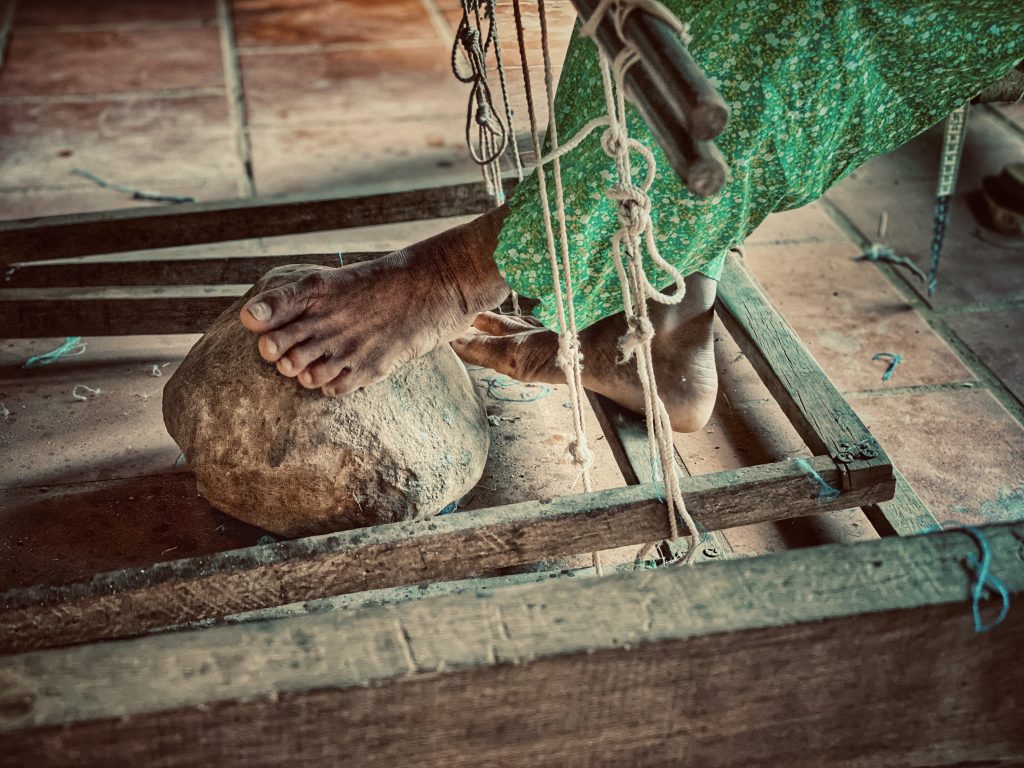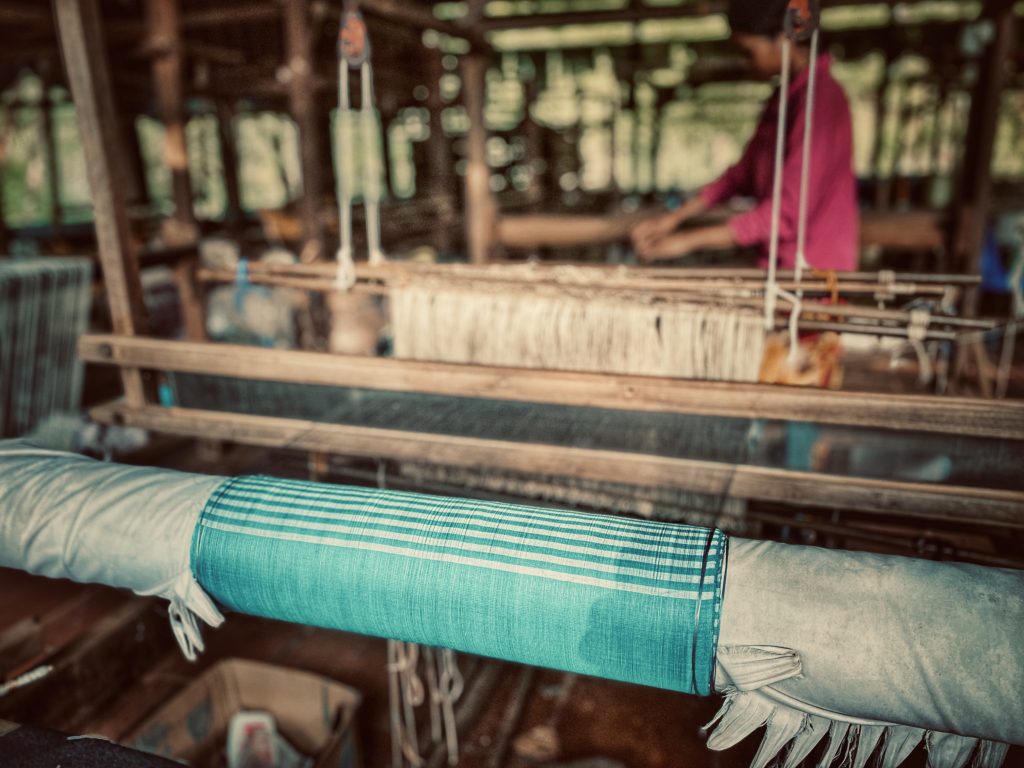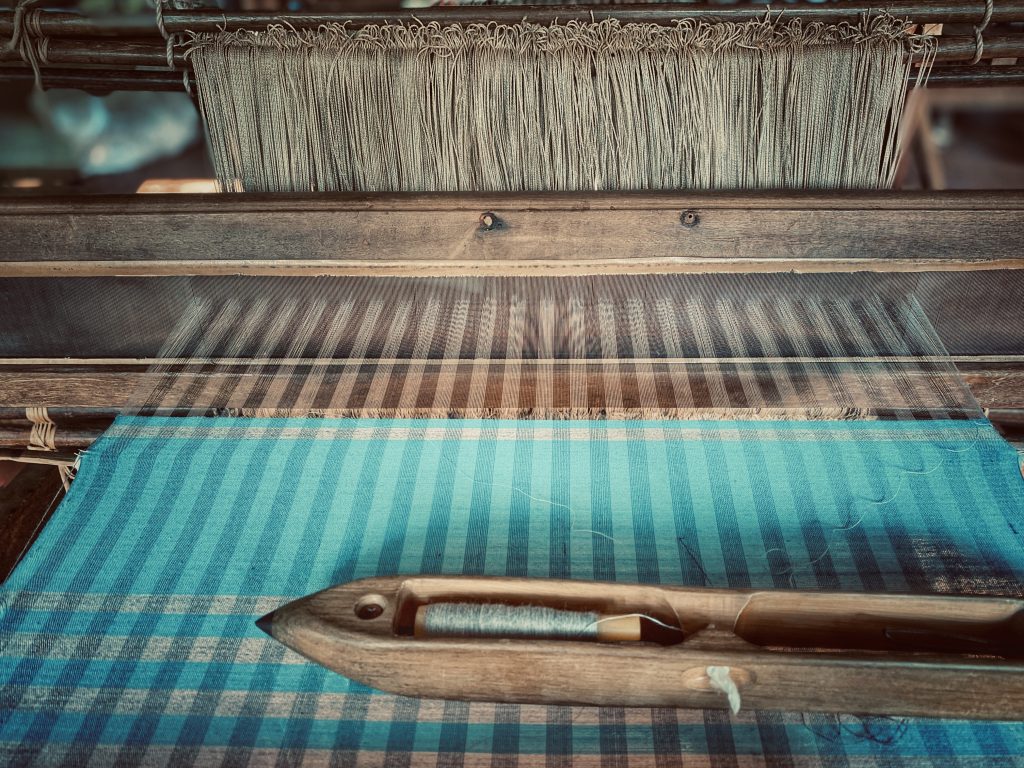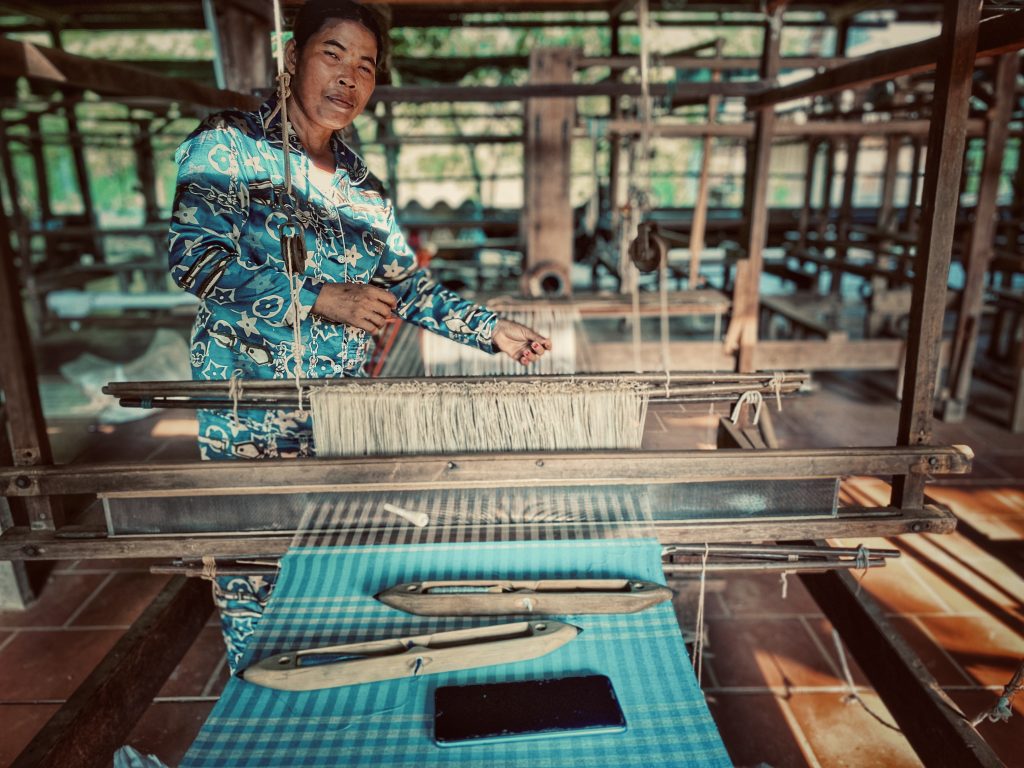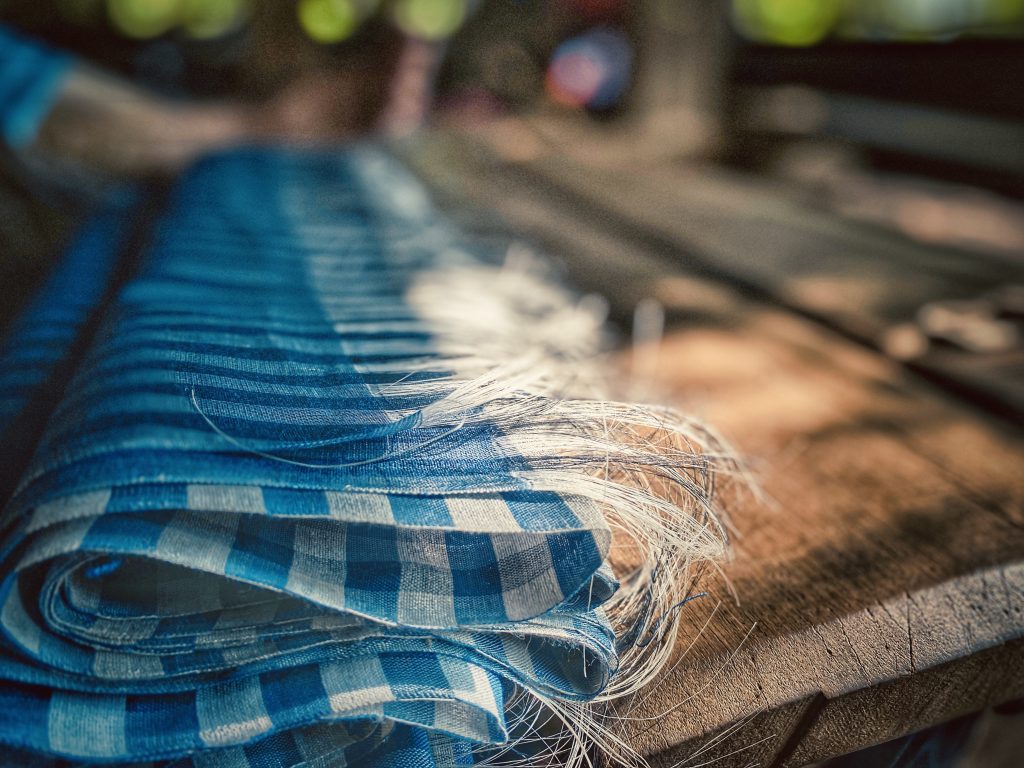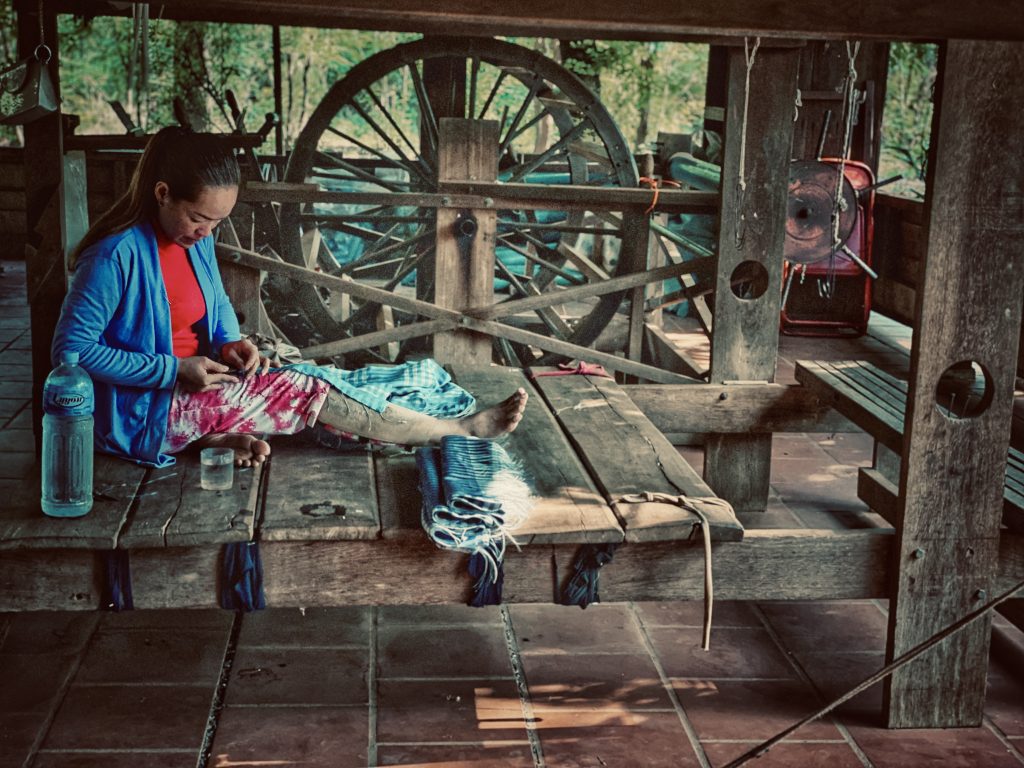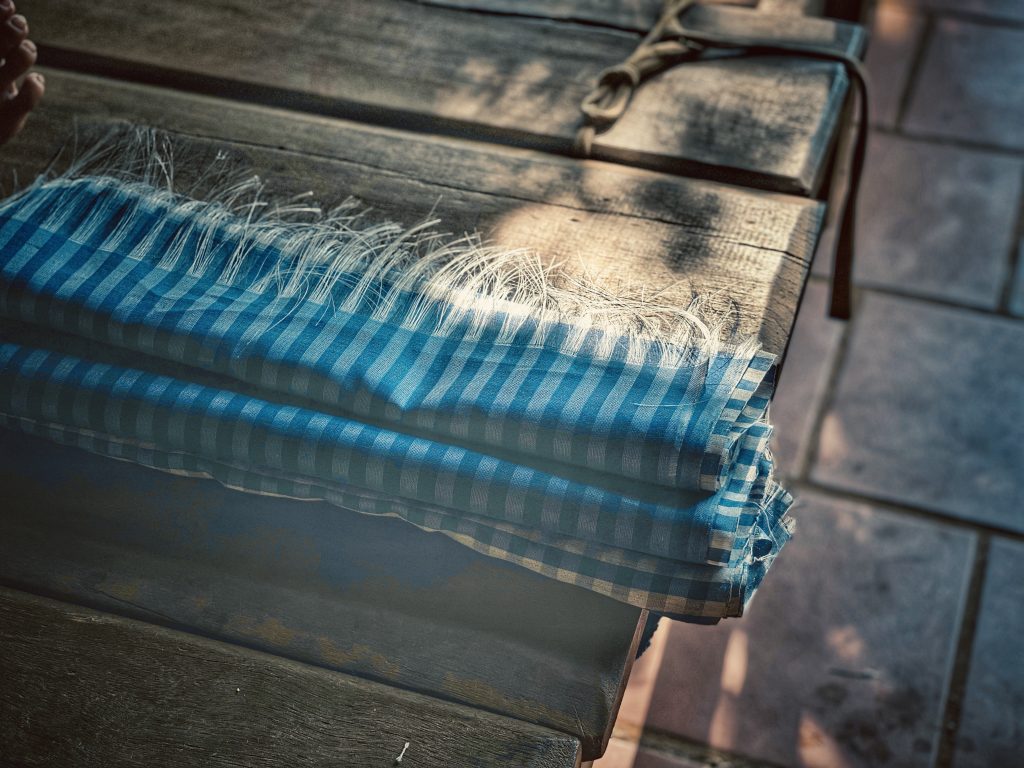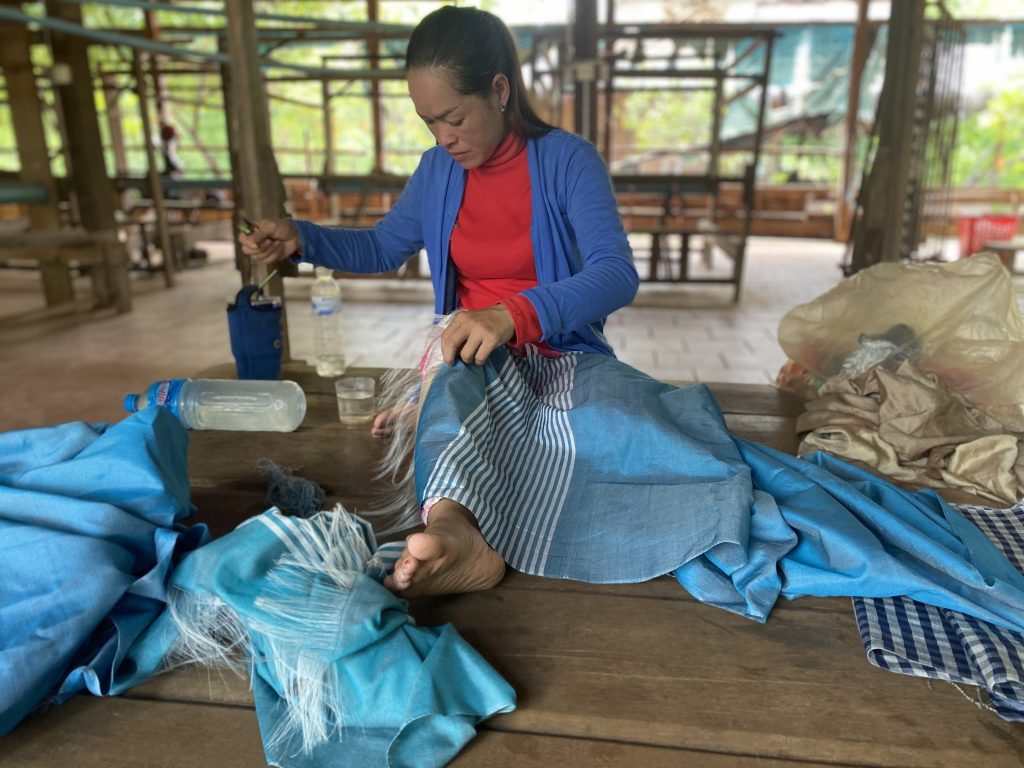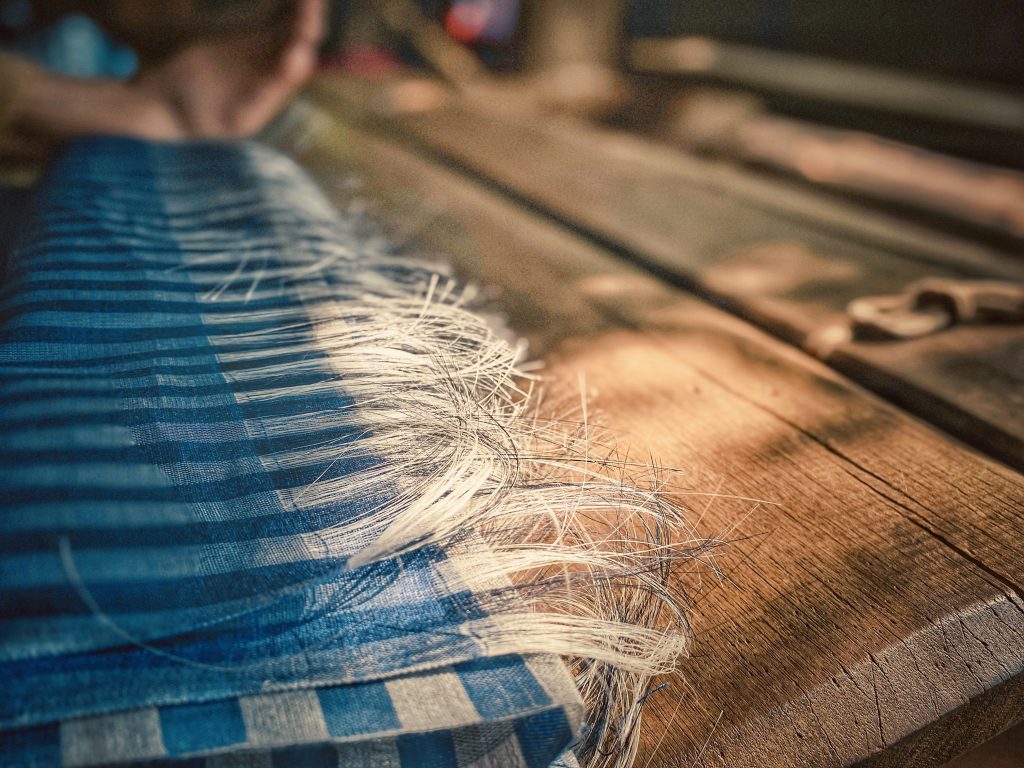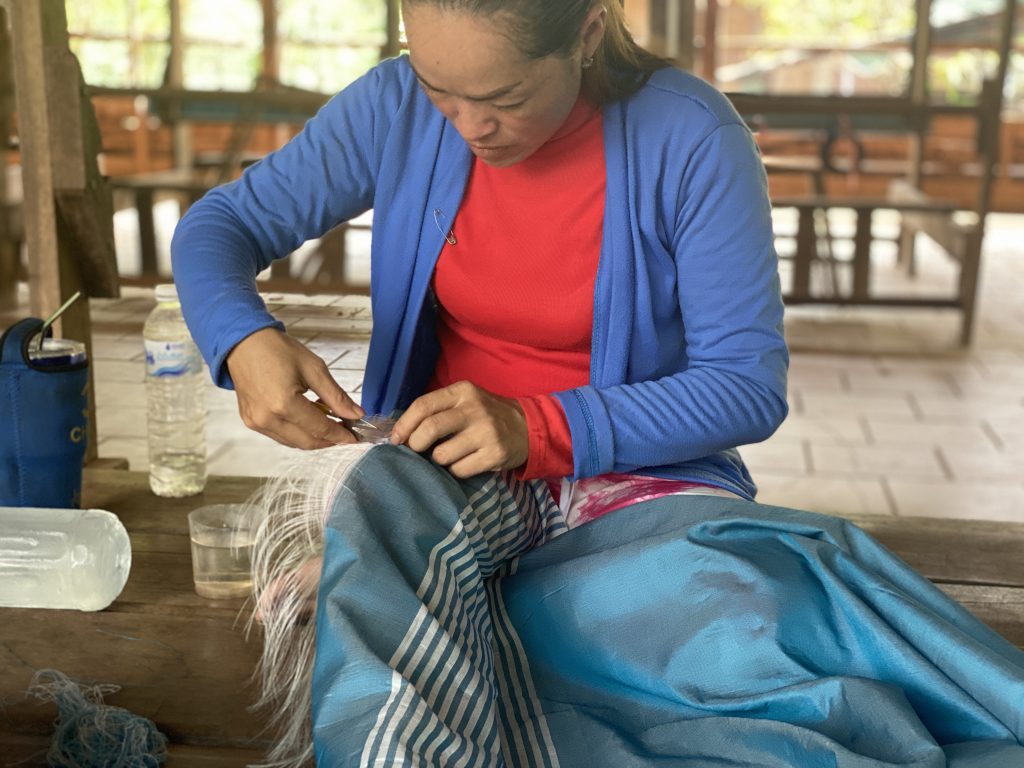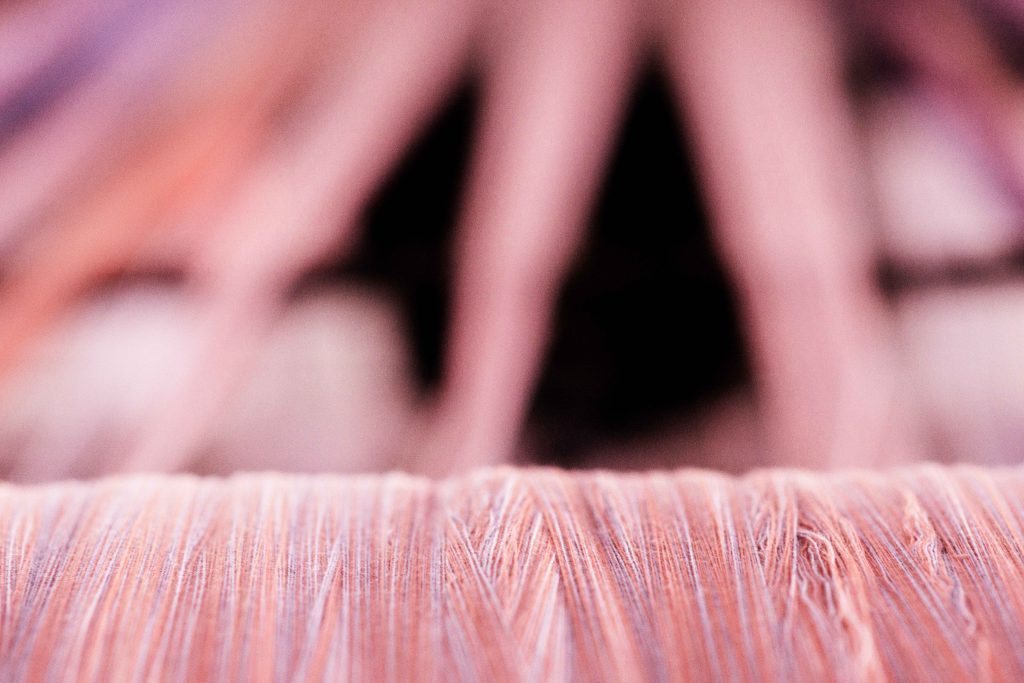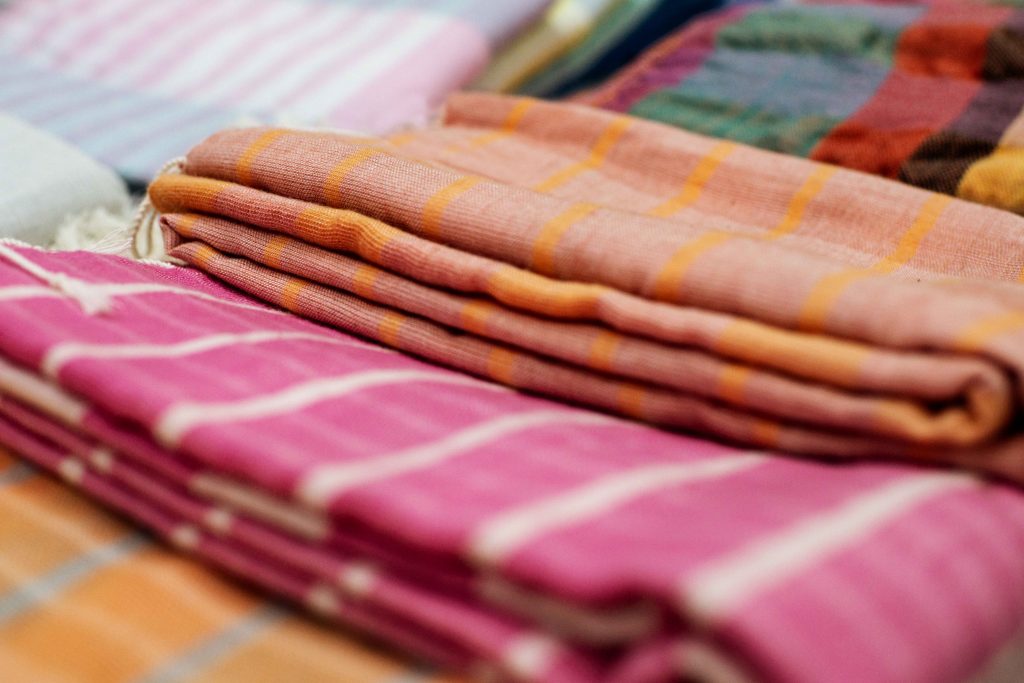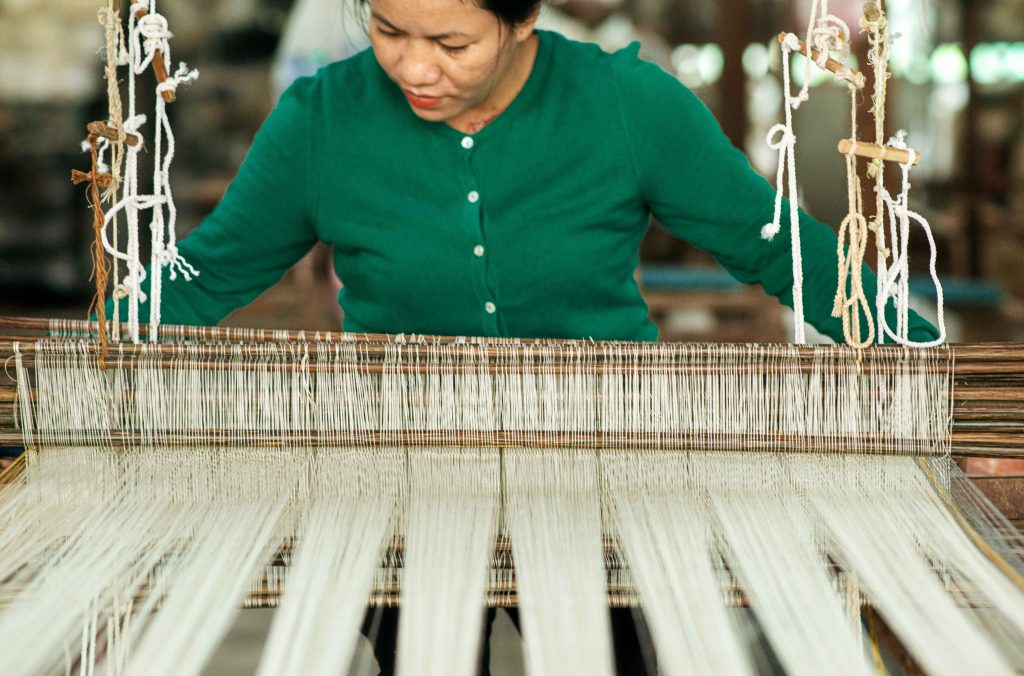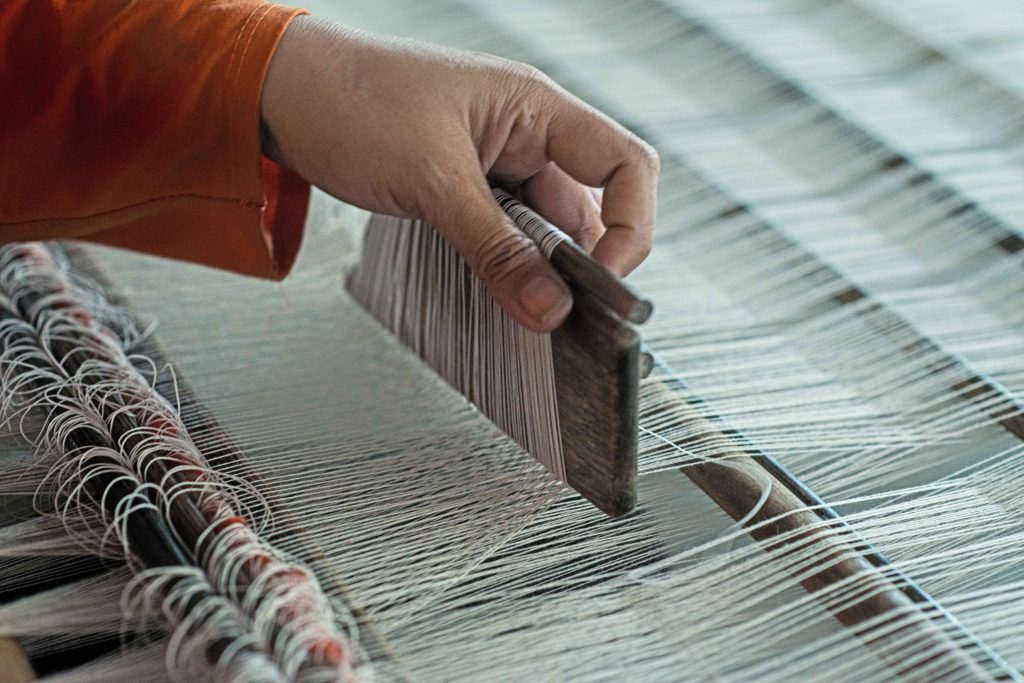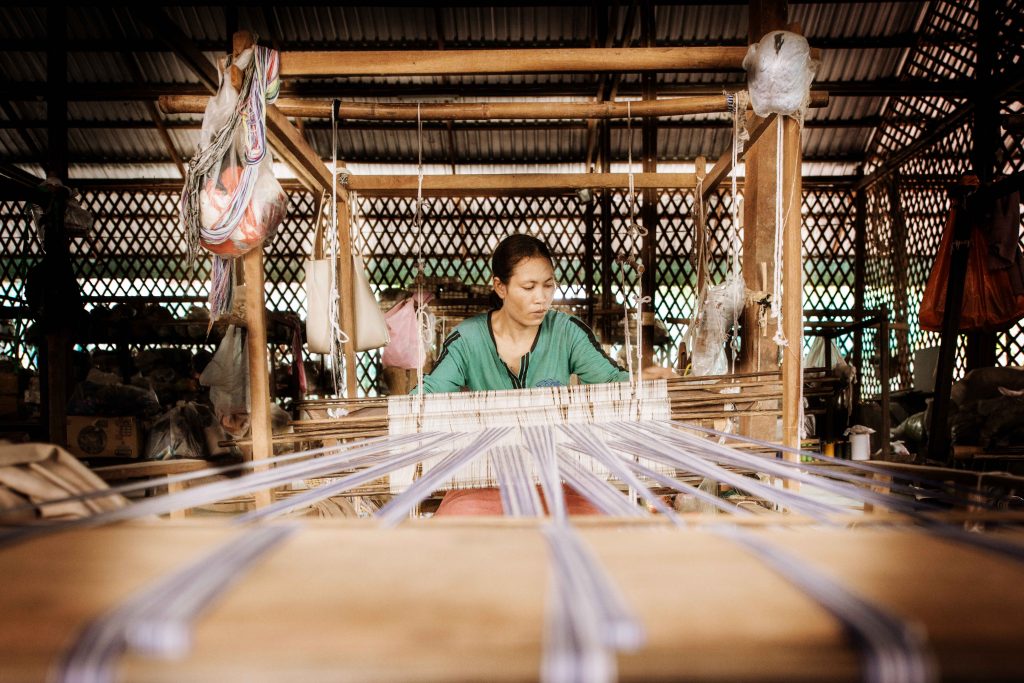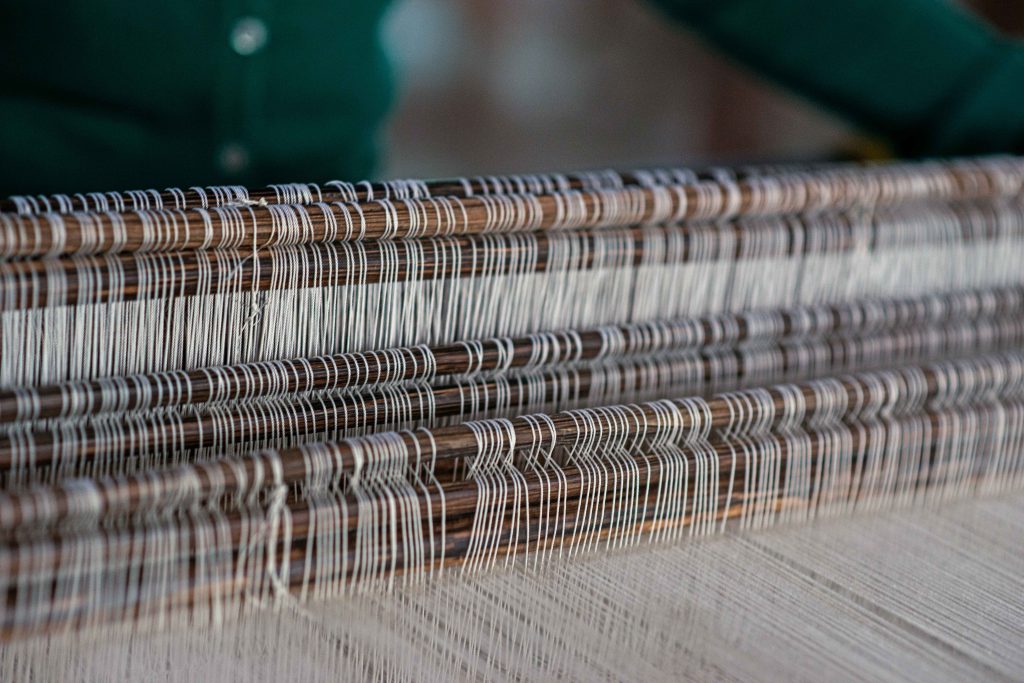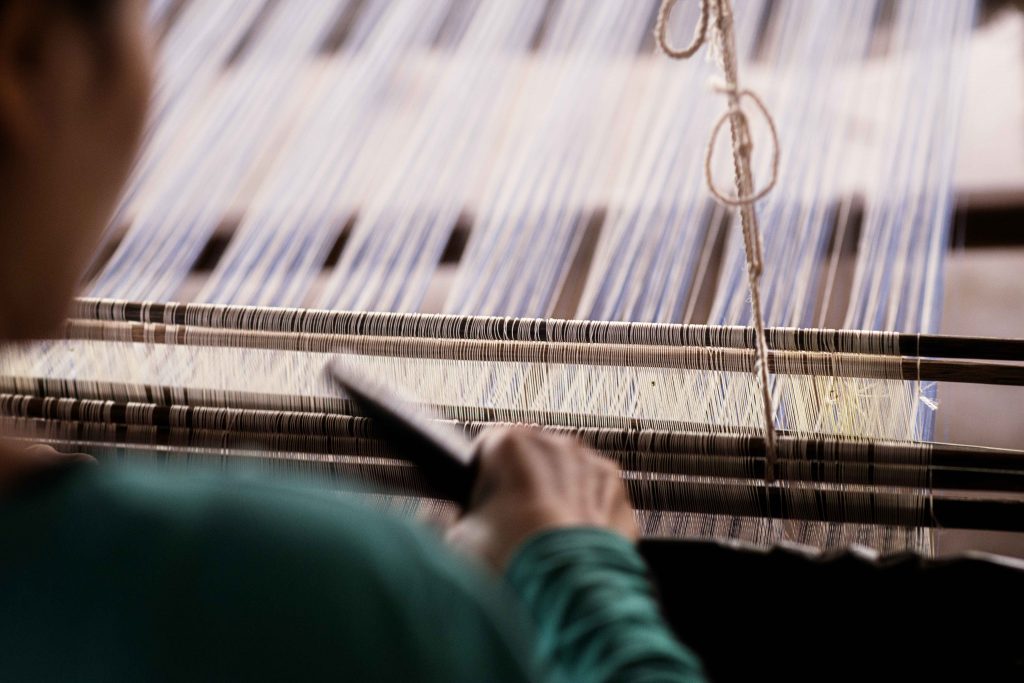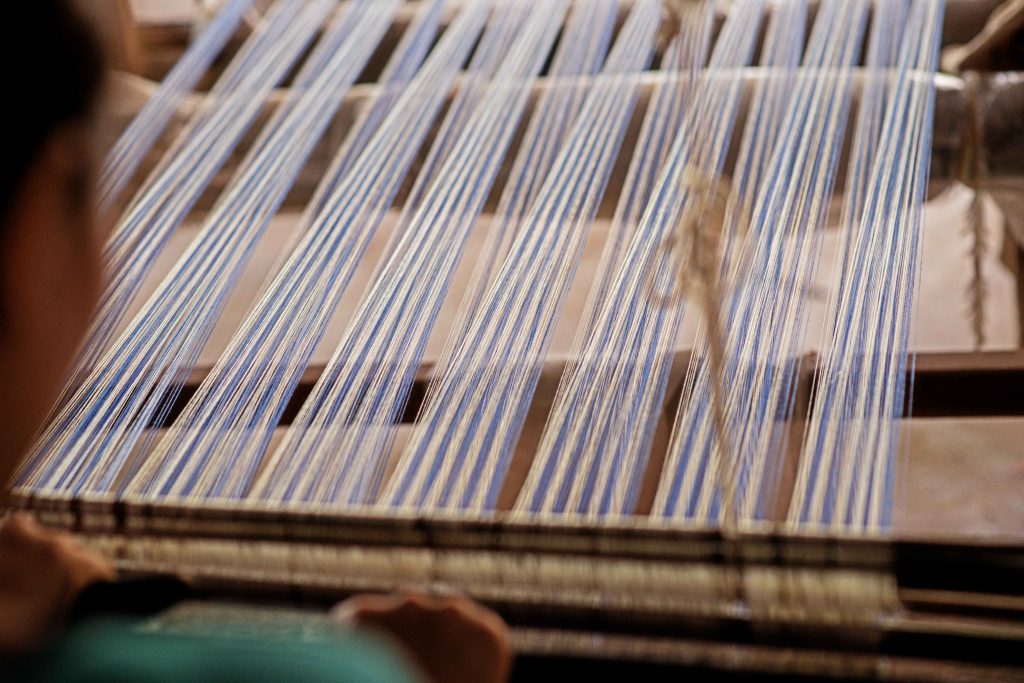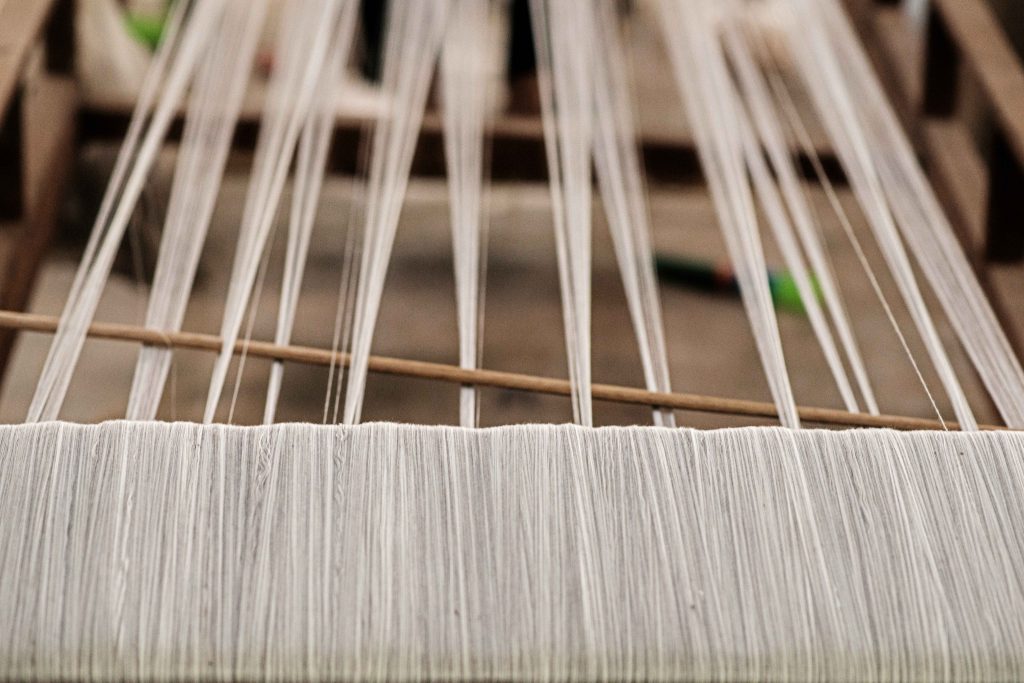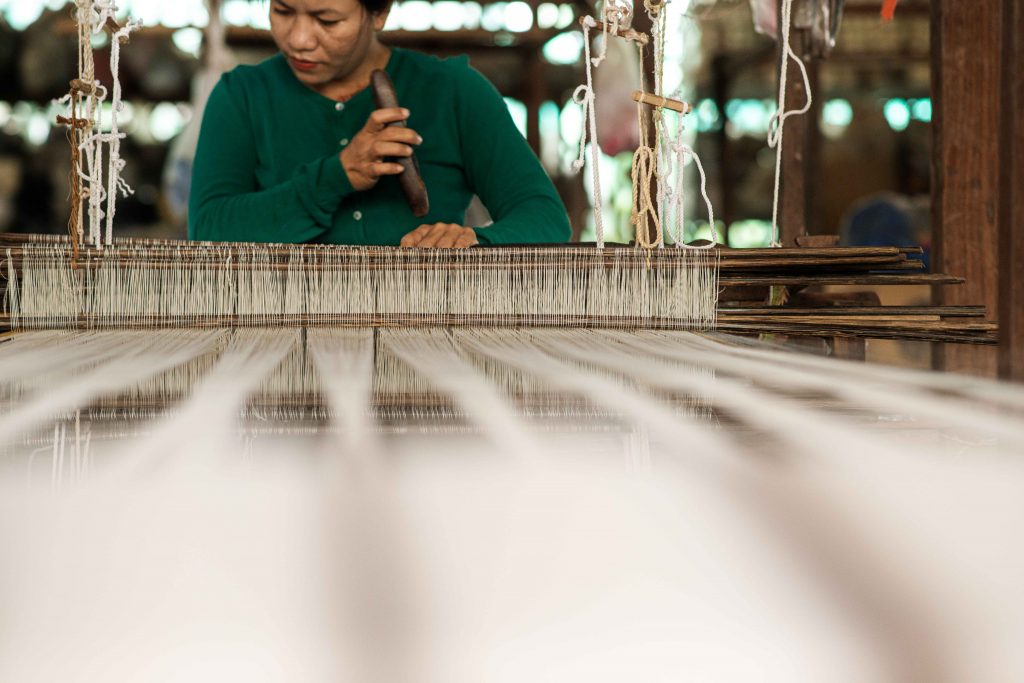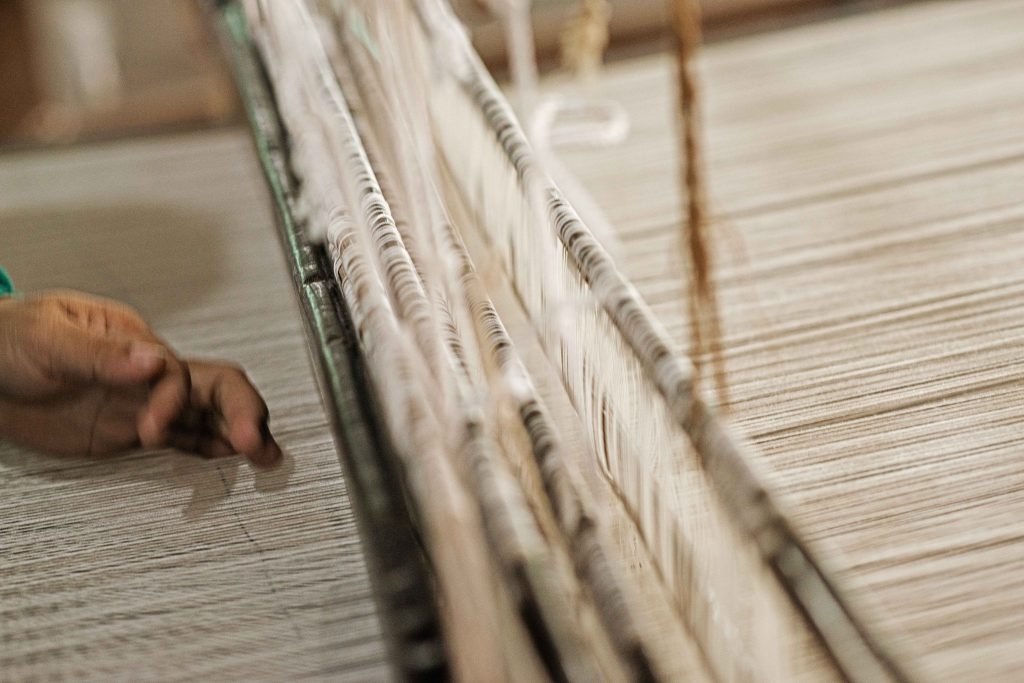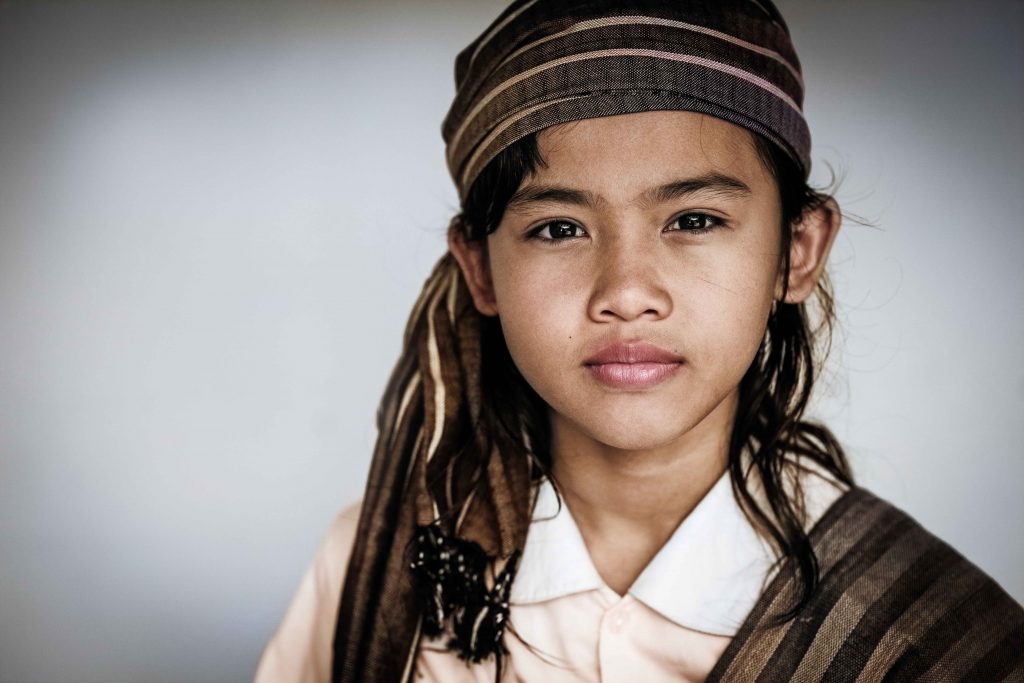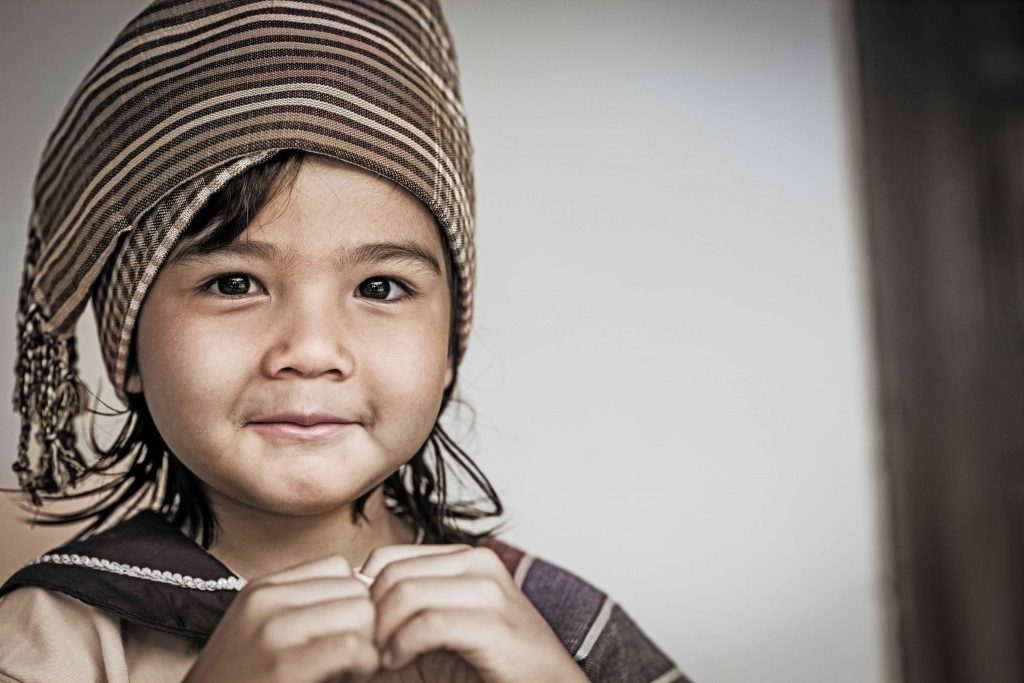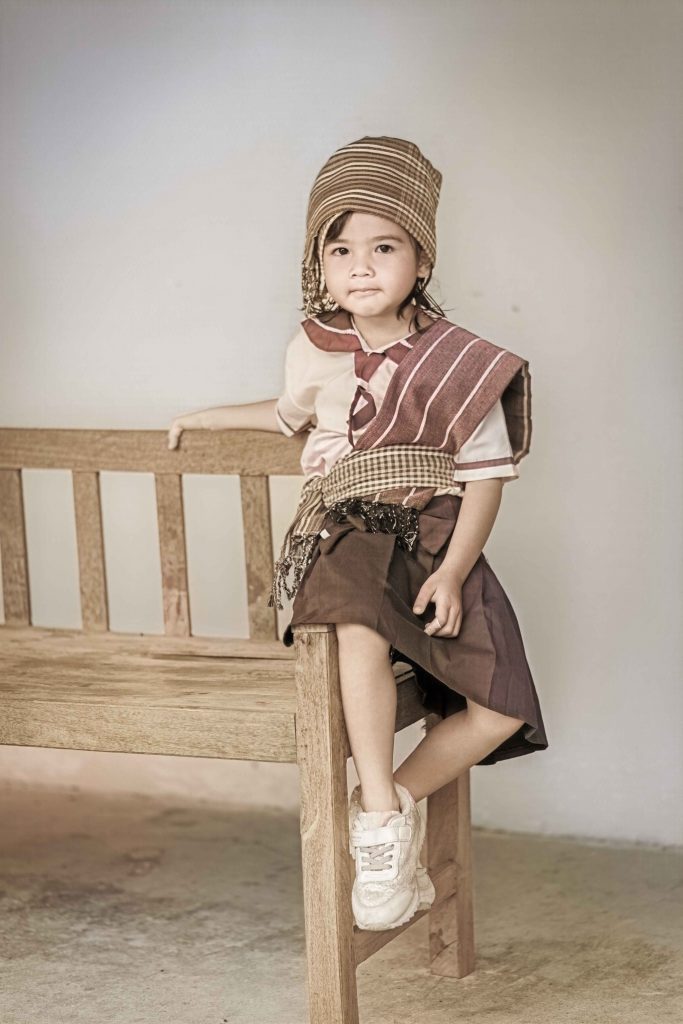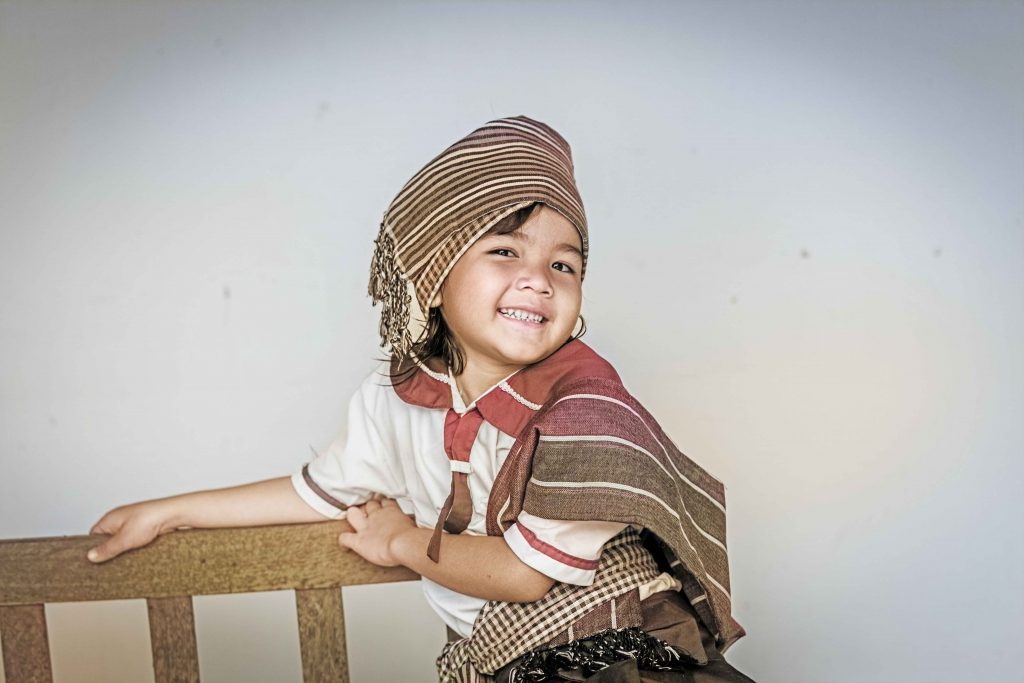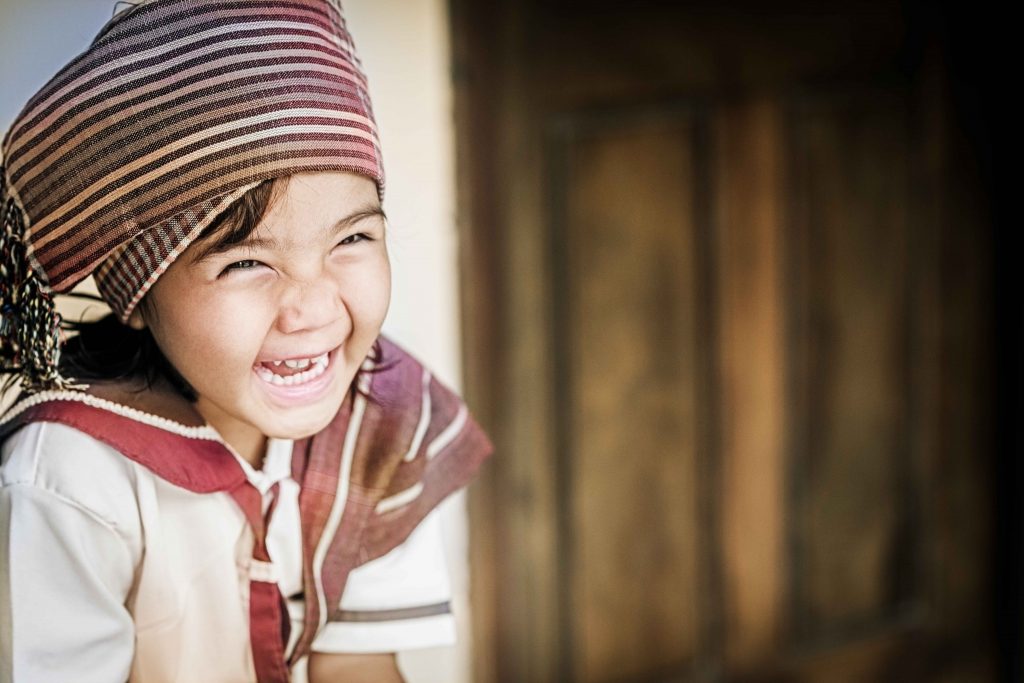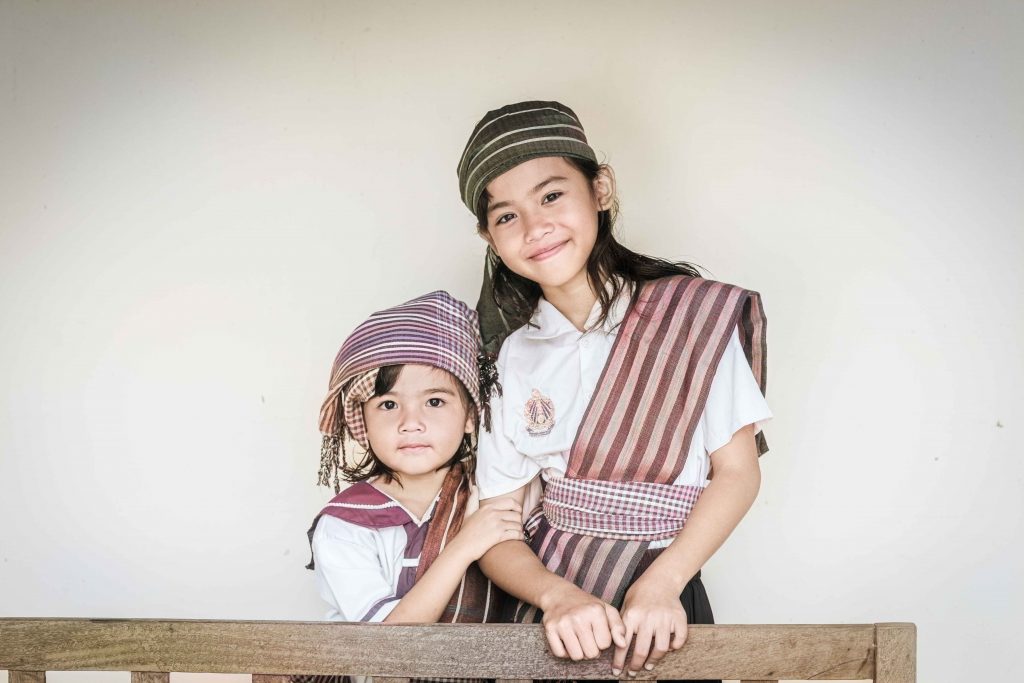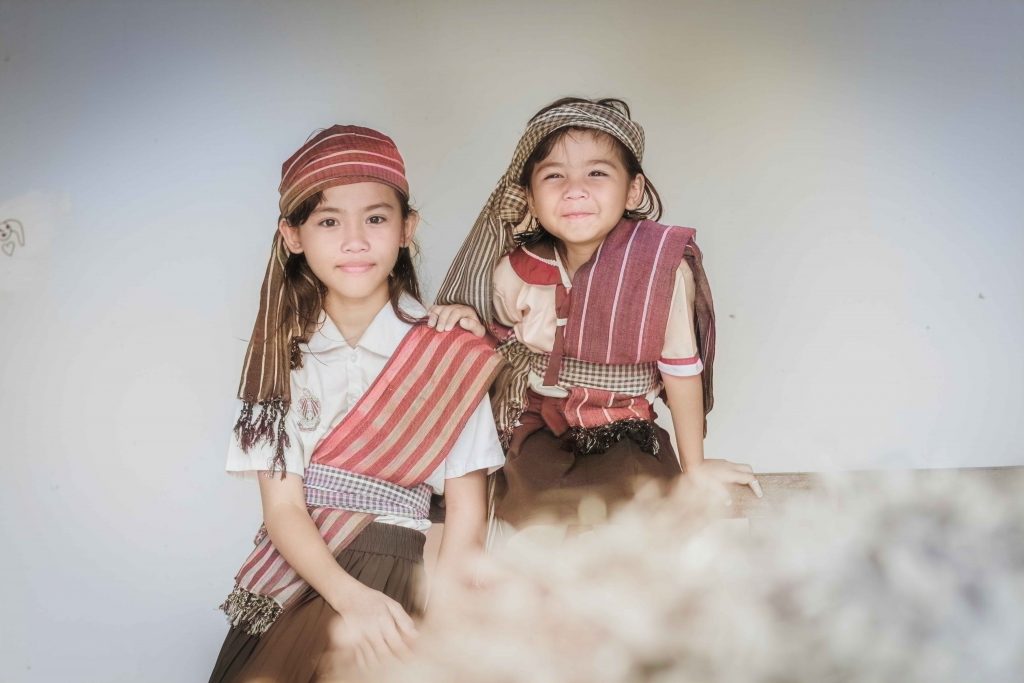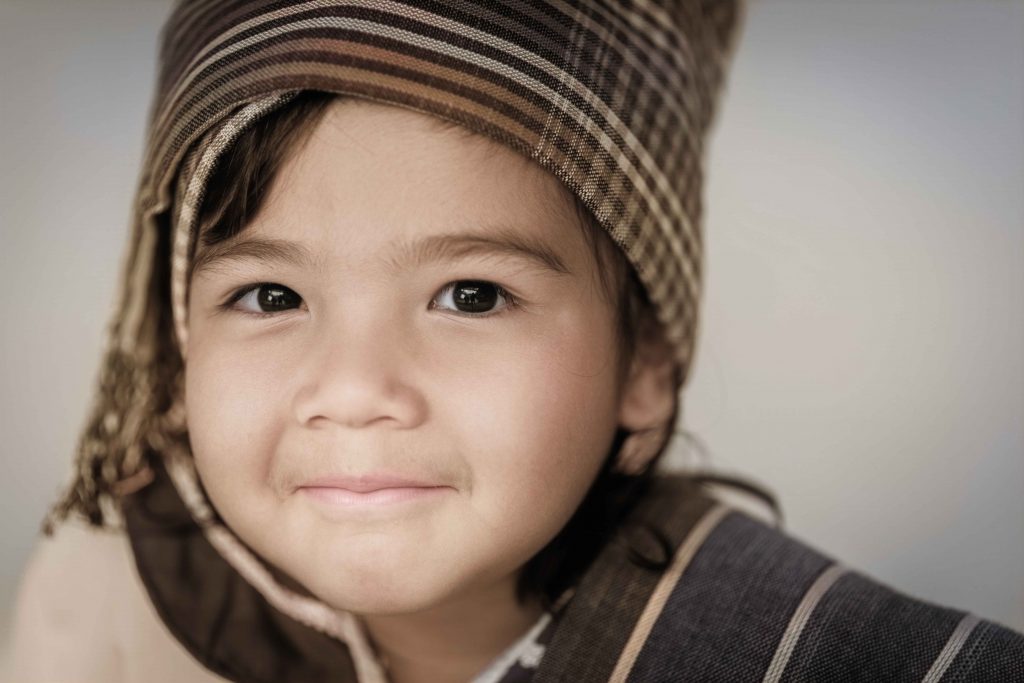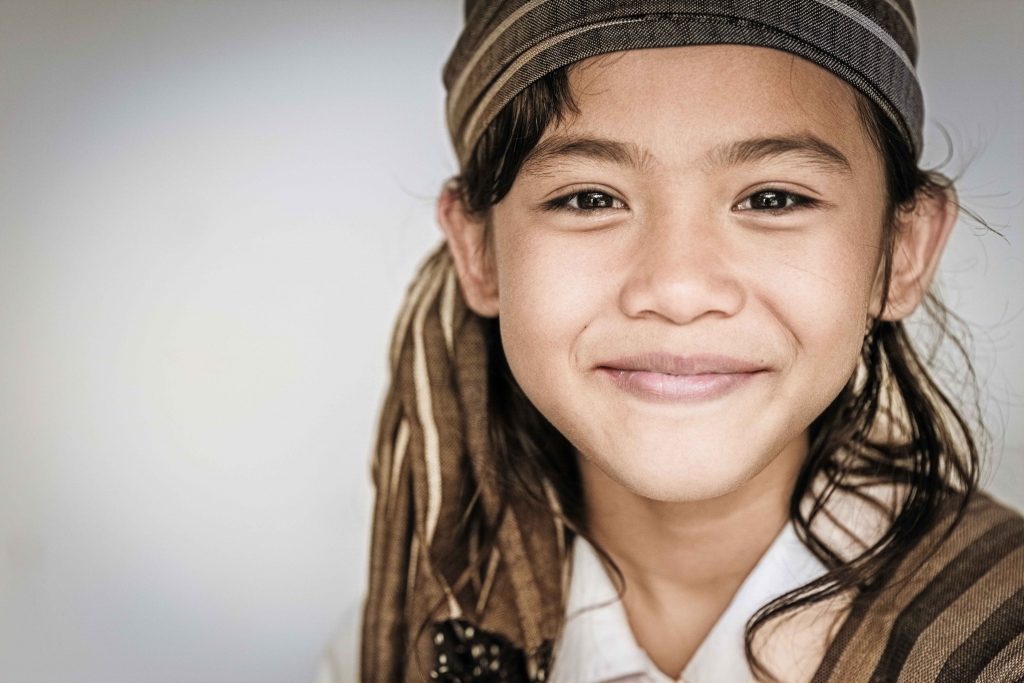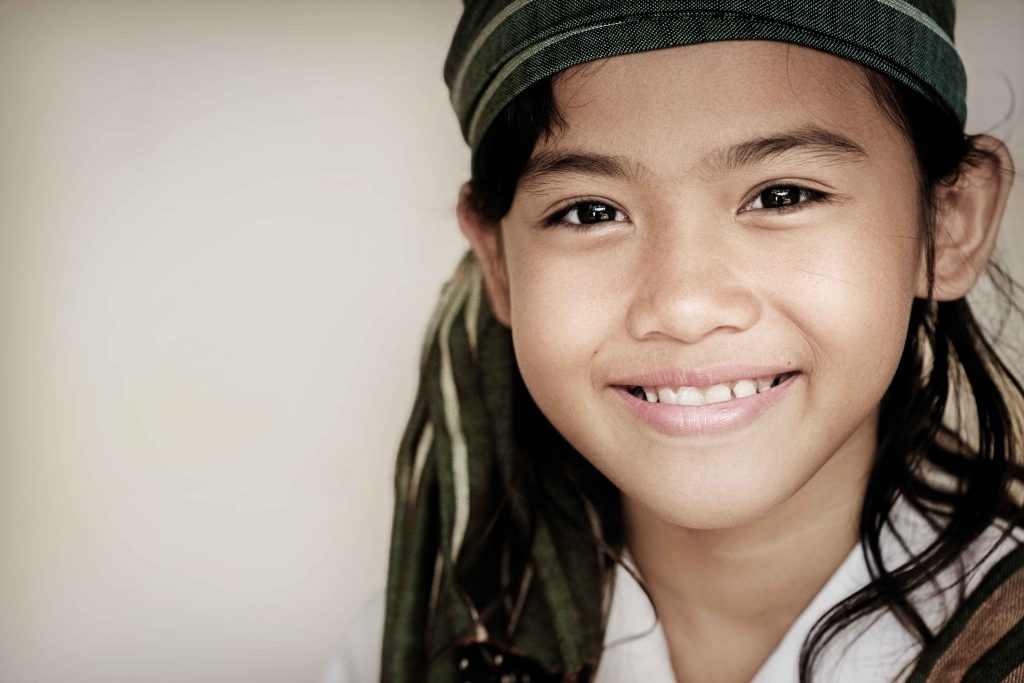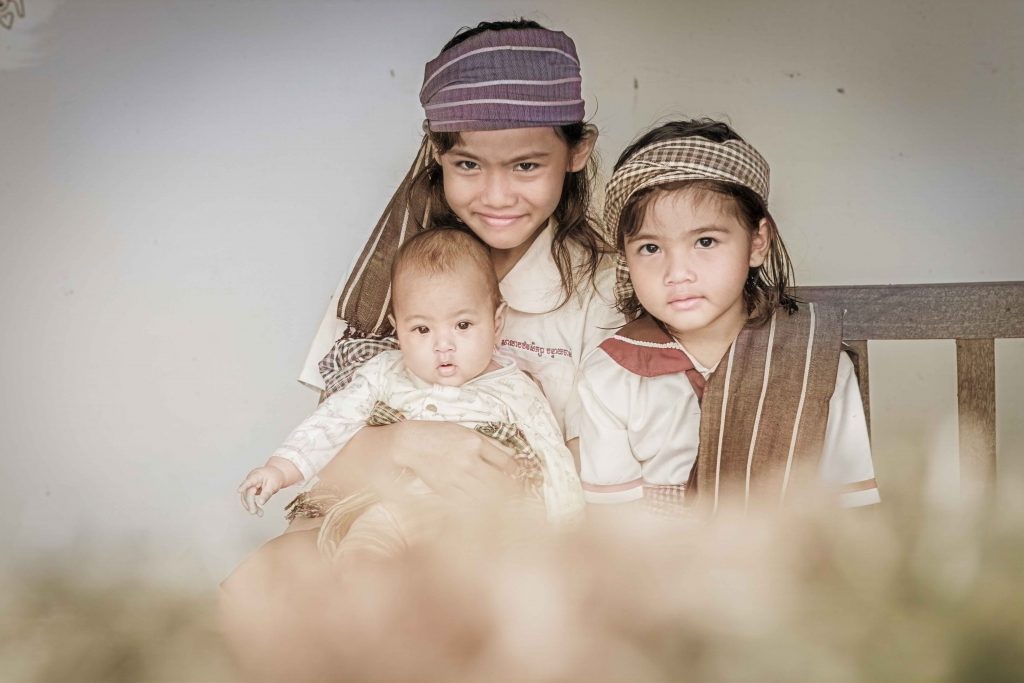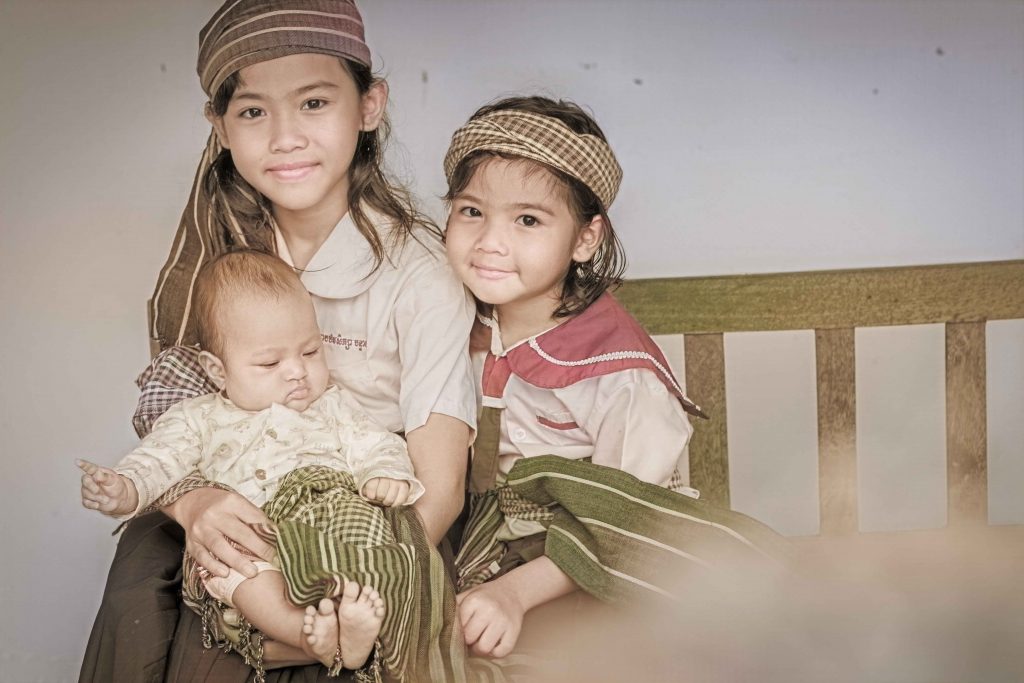The scarf has long become a fashion accessory. At least for most people in the more temperate climate zones. I admit, I am also one of those scarf wearers and put up with it often being in the way, or just too warm, sometimes itchy and scratchy and somehow impractical. Formerly knitted by the grannies themselves, then in class to the chagrin of the teachers, certainly also not infrequently as a provocation, swung the knitting needle with my girlfriends. Who still remembers the Green Party in Germany when they entered the Bundestag knitting and crocheting? Then knitting became unfashionable again and people bought the scarves for completely inflated prices as a fashion accessory.
Somehow, it rarely had any real use. I was not exposed to Siberian cold. And now we are in Cambodia and I am wearing scarves again. Also as a fashion accessory, but much more not against the cold, but to wipe the sweat running permanently from my forehead. Also as a base for the sweaty arms on the table when working on the laptop a real aid. In fact, such a Krama (scarf in Cambodia) has incredibly many uses.
Use of a scarf in Europe!
While in Europe we almost build an emotional attachment to a scarf and it betrays our sentiments, here it is a daily commodity. Let’s face three well-known examples of wearing a scarf in Europe:
The “artist’s scarf“!
The way of wearing a scarf that has certainly nothing to do with warming the neck. Reminiscent of the 18th century, when the liberation from ties and collars was also associated with a political demand: my neck is mine, fluttered around by loose scarf ends.
The „Gallows loop“!
The origin of this technique lies in the early childhood phase, when the son is still dressed by his mother. A daily power struggle for dominance, fought out on the battlefield of fashion. The tightening of the noose is at the same time a symbolic strangulation of the child? In any case, this style is as sexy as the ribbons on the mittens.
The „Monkey swing“, the „Double knot“ or the „Senator technique“. Will say, the scarf as a fashion accessory also says something about the type. Which type do you think you are?
And finally, there is the „Fan scarf“!
Welcome to the club! Not only passionate football fans should express their enthusiasm with a fan scarf. It has arrived in the arts as well, the “Museums League”. A collection of fan scarves for museums. Because – like football clubs – these are identity-forming and can convey a sense of belonging.
Back to the Krama
I visited 2 weaving shops and almost became a bit sad that this art will disappear. A few last felt hopeless struggles to preserve the knowledge of making Krama, this art of weaving.
“The craft”, for us in Germany a synonym for quality. This sits deep, although most of the classic crafts are dying out or have died out. For example the craft of shoemaking: they have long since ceased to be handmade, but even to repair them are only brought in exceptional cases. A small group, the “Sneaker Rescue” in Berlin, is trying to fill a niche in the area of sustainability with sports shoe repairs. Very nice idea, but only in Berlin at the most and probably only a hype.
Handmade shoes only something for people with more money. The handicraft is too expensive. Abroad it is still affordable. Or let’s say better, the people earn so little there that the handmade products are affordable for every visitor.
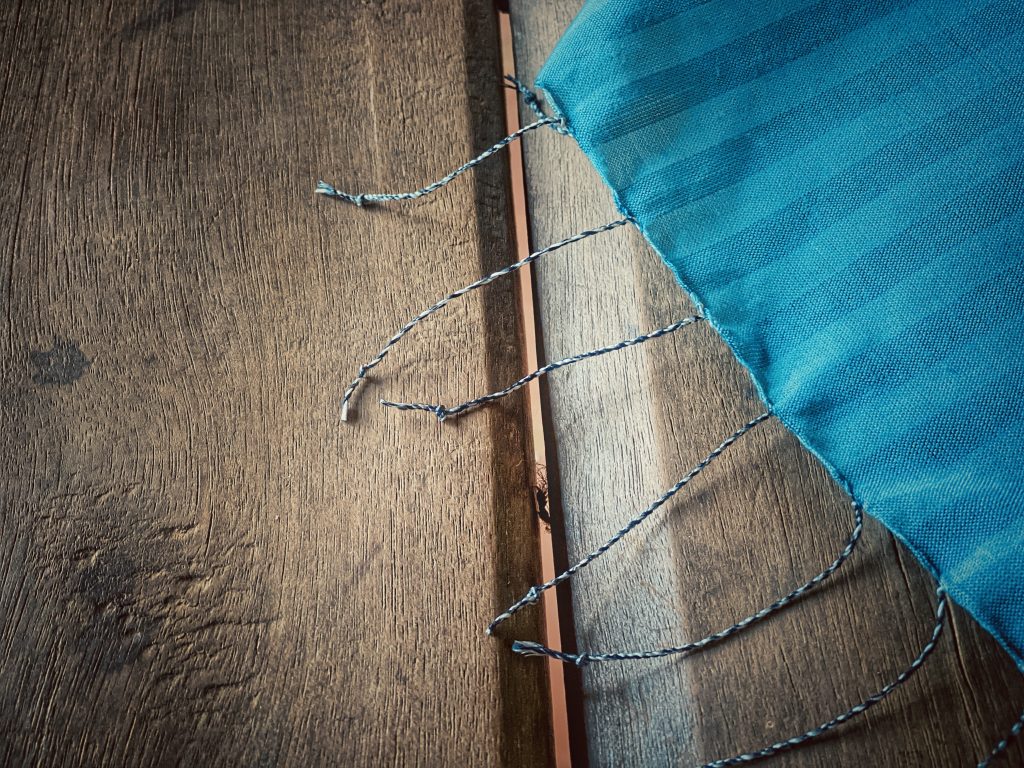
A hand-woven scarf here in Cambodia made of cotton costs 15 $, one made of silk 30 $. One person sits on one scarf for a whole day. And what do the most tourists do? Buy the machine-made ones for 1$ up to 5$, the mass-produced ones from Thailand or Vietnam. So handicraft is too expensive for us?! Even if it is actually not expensive. And so this craft will also disappear. The skill and knowledge of the looms, the materials, the patterns, everything will disappear. A few try to keep the weaving going.
New patterns, new colors, so beautiful scarfs are created.
And why not. The original, the red and white one is still there, of course. The Krama, which is made of cotton. The cotton that used to come from Cambodia, today has to be imported.
With the many Krama patterns that are now available, you could see them as a symbol of Cambodia’s revival. The country is changing and these scarves embody the desire of a people to open up to the world while preserving their own values. But only if the craft survives and the Khmer themselves decide which patterns and colors are created and used. If the industry decides, then the reference Krama – Cambodia might be lost.
The Khmers consider this scarf as a piece of heritage and express their affiliation to Cambodia by wearing the Krama.
The cotton (samley) was collected, then spread out and then soaked in rice for two or three days. Parts of the threads were then dyed red before weaving began. The rich, on the other hand, preferred to use silk because the fabric remained cool in the summer, but also to distinguish themselves from the peasants. The Krama reflected the status of its owner.
People here use it for much more than just a scarf – if they still use it.
A Krama can also be used as a sarong, a towel, or can be tied around the feet to protect them when climbing trees or to carry objects in, for small children to carry or as a band to move the hammocks that serve as a cradle for the smallest. Traditionally in purple and white squares, Krama can be found today in many colors and sizes in the markets.
It can still be found everywhere in the village. But even in the last 6 years that I have been traveling Cambodia, it is visibly disappearing. Modern garments are replacing it. We tourists find it fascinating. A scarf that is not just a scarf. Less an ornament than a real object of daily use.
I use it not only to wipe off sweat, but also to protect myself from the sand on the dusty streets or simply wrapped around my head to protect myself from the sun.
Weaving places to visit
If you have the opportunity, visit these two places. Rather not touristy, but very authentic. Buy your scarves there, so that the support comes directly to the employees who come from the surrounding village.
Weaves of Cambodia for the silk Kramas.
Krama YuYu for the cotton Kramas with many new colors and patterns.
For “Weaves of Cambodia” covid has left many problems behind. So do not expect too much, but for sure, you can expect wonderful silk peaces, handmade by the people in the village.
For “Krama YuYu” you will find so many new colors und patterns, it is incredible difficult to decide which one to take. The owner of the place is from Japan and she brings in many ideas from there. But inspite of the success, she is not sure if she will go on with this place. For example it is just too difficult to get the right spare parts for the weaving machines in Cambodia.
Portrait with Krama
Because I had so many questions about the Krama, this little ones did spend some of their time for some wonderful shots 🙂

